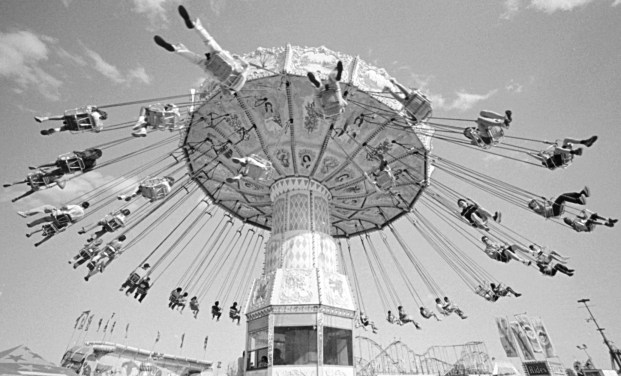I have just sat what I hope is the last law exam I ever need to sit.
Tag: law
All the printers I’ve ever owned …

- An ancient (even in 1985) Centronics serial dot-matrix printer that we never got working with the CPC464. The print head was driven along a rack, and when it hit the right margin, an idler gear was wedged in place, forcing the carriage to return. Crude, noisy but effective.
- Amstrad DMP-2000. Plasticky but remarkably good 9-pin printer. Had an open-loop ribbon that we used to re-ink with thick oily endorsing ink until the ribbons wore through.
- NEC Pinwriter P20. A potentially lovely 24-pin printer ruined by a design flaw. Print head pins would get caught in the ribbon, and snap off. It didn’t help that the dealer that sold it to me wouldn’t refund my money, and required gentle persuasion from a lawyer to do so.
- Kodak-Diconix 300 inkjet printer. I got this to review for Amiga Computing, and the dealer never wanted it back. It used HP ThinkJet print gear which used tiny cartridges that sucked ink like no tomorrow; you could hear the droplets hit the page.
- HP DeskJet 500. I got this for my MSc thesis. Approximately the shape of Torness nuclear power station (and only slightly smaller), last I heard it was still running.
- Canon BJ 200. A little mono inkjet printer that ran to 360dpi, or 720 if you had all the time in the world and an unlimited ink budget.
- Epson Stylus Colour. My first colour printer. It definitely couldn’t print photos very well.
- HP LaserJet II. Big, heavy, slow, and crackling with ozone, this was retired from Glasgow University. Made the lights dim when it started to print. Came with a clone PostScript cartridge that turned it into the world’s second-slowest PS printer. We did all our Canadian visa paperwork on it.
- Epson Stylus C80. This one could print photos tolerably well, but the cartridges dried out quickly, runing the quality and making it expensive to run.
- Okidata OL-410e PS. The world’s slowest PostScript printer. Sold by someone on tortech who should’ve known better (and bought by someone who also should’ve known better), this printer jams on every sheet fed into it due to a damaged paper path. Unusually, it uses an LED imaging system instead of laser xerography, and has a weird open-hopper toner system that makes transporting a part-used print cartridge a hazard.
- HP LaserJet 4M Plus. With its duplexer and extra paper tray it’s huge and heavy, but it still produces crisp pages after nearly 1,000,000 page impressions. I actually have two of these; one was bought for $99 refurbished, and the other (which doesn’t print nearly so well) was got on eBay for $45, including duplexer and 500-sheet tray. Combining the two (and judiciously adding a bunch of RAM) has given me a monster network printer which lets you know it’s running by dimming the lights from here to Etobicoke.
- IBM Wheelwriter typewriter/ daisywheel printer. I’ve only ever produced a couple of pages on this, but this is the ultimate letter-quality printer. It also sounds like someone slowly machine-gunning the neighbourhood, so mostly lives under wraps.
- HP PhotoSmart C5180. It’s a network photo printer/scanner that I bought yesterday. Really does print indistinguishably from photos, and prints direct from memory cards. When first installed, makes an amusing array of howls, boinks, squeals, beeps and sproings as it primes the print heads.
ex Ex
pocket mail
Gmail works flawlessly on the BlackBerry. Wish I could find a general POP3 client for my other mail…
Dun Law Attitude Change
You can’t know how happy it makes me to read about the survey that shows that over 90% of people living closest to the Dun Law site supported their local wind farm. The early planning stages of this project were particularly fraught with opposition.
big windfarm, big deal
So there was a stramash that the RSPB published a map showing where the Lewis wind farm would reach if it started in Edinburgh. Oh noes! Looks like it’d go all the way to Methil.
I’ve been working on a couple of medium-sized wind farms in Ontario. For top laughs, I tried overlaying them on Scotland, using streetmap.co.uk for the measurements.
Since I’m a weegie, I started at George Square. One of the farms would stretch all the way west by Wishaw, near Murdostoun Castle (and the comically-named town of Bonkle). The other would run north to somewhere between Fintry and Kippen, in Stirlingshire.
For those of you unlucky enough to be based east of Falkirk, I tried the same starting at Edinburgh Castle. The first wind farm would run west to the hamlet of Gilchriston, which is just north-west of Dun Law Wind Farm, which I worked on in the distant past. (If you run the farm west from Edinburgh, you end up in Bo’ness, which no-one would want to do.) The other design would end up somewhere between Kirkcaldy and Glenrothes, near Thornton — and not that far from Methil, a distance that the RSPB would have us believe is just too far for a wind farm.
So, where’s the news, RSPB? How did your land get somehow more precious than ours?
